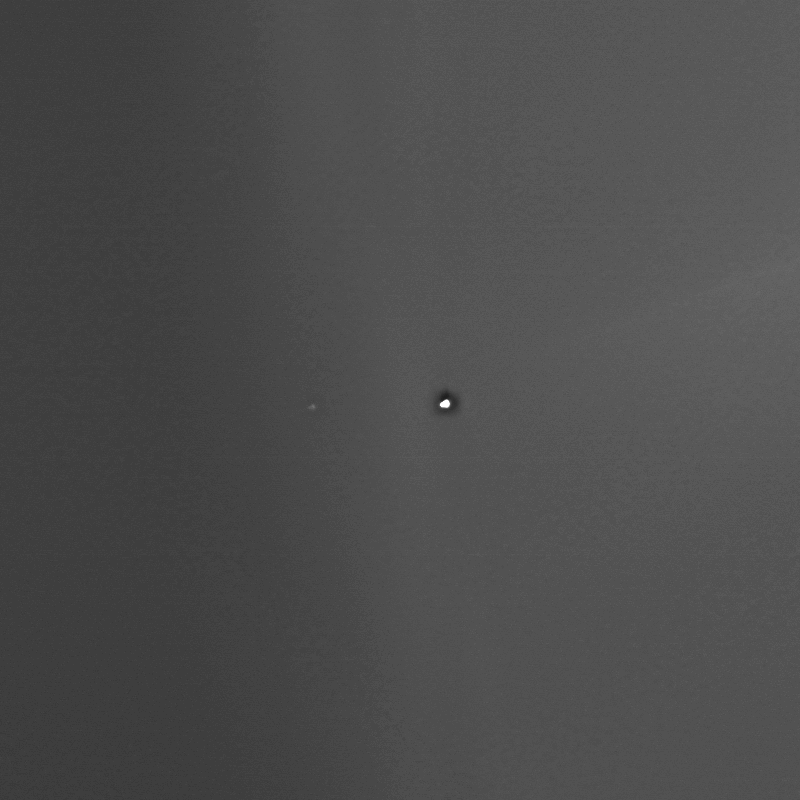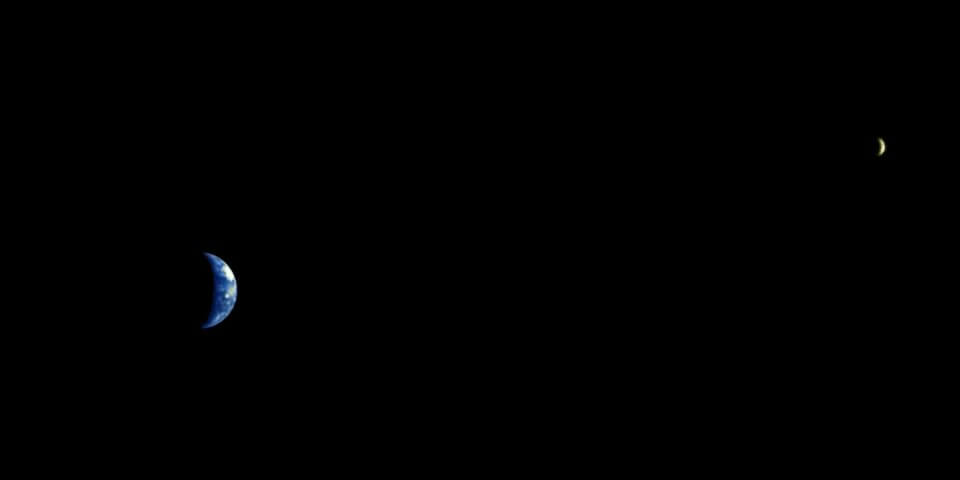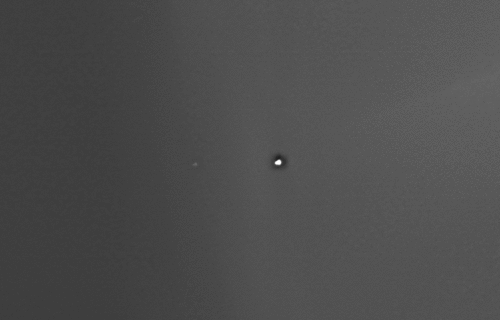PARIS, France — While Matt Damon was stuck on Mars and peered back at Earth in “The Martian,” his home planet appeared as just a small dot. It was an image reminiscent of the famous “Pale Blue Dot” captured by NASA’s Voyager 1 in 1990. This sentiment was brought to real life by a recent image taken by the European Space Agency’s Mars Express orbiter.
Through binoculars, one can see the Moon as a white dot circling this tiny blue speck. This recent snapshot from Mars might not be the most impressive image from a space mission, but it undeniably evokes a sense of awe and reflection.

Reflecting on the iconic 1990 image, the late scientist and communicator, Carl Sagan, described Earth as the only known world to harbor life. His speech emphasized our collective responsibility to be kinder to one another and to care for our planet.
Fast forward three decades and space probes continue to capture images of Earth as they venture deeper into the solar system. Despite the advancements in space exploration, Sagan’s message about our planet’s fragility and uniqueness remains pertinent.
“On the special occasion of Mars Express’ 20th anniversary since launch, we wanted to bring Carl Sagan’s reflections back to the present day, in which the worsening climate and ecological crisis make them more valid than ever,” says Jorge Hernández Bernal, Mars Express team member from the University of the Basque Country and Sorbonne University, in a media release. “In these simple snapshots from Mars Express, Earth has the equivalent size as an ant seen from a distance of 100 meters, and we are all in there. Even though we have seen images like these before, it is still humbling to pause and think: we need to look after the pale blue dot, there is no planet B.”
The images, taken between May 15 and June 2 of this year, showcased over half of the moon’s monthly orbit around Earth. Interestingly, the final image marked the 20th launch anniversary of Mars Express. On this occasion, the spacecraft’s Visual Monitoring Camera beamed images of Mars directly to Earth in a unique broadcast.
“Perhaps it will only be another 20 years before humans can look up from the surface of Mars to see Earth in the night sky,” says Colin Wilson, ESA project scientist for Mars Express and the ExoMars Trace Gas Orbiter. “ESA has a long history of Mars exploration, first from orbit with Mars Express and the Trace Gas Orbiter, and in the next decade on the surface with the Rosalind Franklin rover and the completion of the Mars Sample Return missions. The next bold ambition is of course to explore with humans.”

While these images might not hold scientific significance, they possess profound emotional value, especially to astronomers.
“There is no scientific value in these images, but since the conditions allowed us to point the HRSC to Earth and shortly after the VMC to Mars, we took the opportunity to create our own portrait of home on this incredible mission milestone for Mars Express,” says Daniela Tirsch, member of the Mars Express HRSC team at the German Aerospace Center, DLR.
You might also be interested in:
- Not-so-red Planet? Stunning images from space cast new light on Mars
- Is living on Mars impossible? Space travel alters genes, weakens astronauts’ immune system
- Can stars really live on Mars? Deep underground labs may hold the key

